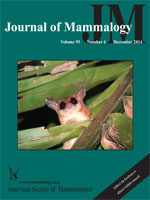Vegetation in the Great Basin has been changing over millennia in response to climate but the rate of change since European settlement in the last 150 years has been unprecedented. Beyond the changing climate, explanations for these more recent vegetation alterations are diverse and include a myriad of human influences: the introduction of livestock (cattle, sheep, and horses), homesteading, cultivation, mining, introduction of invasive species, forage seeding programs, water diversion, elevated CO2 levels, changing fire frequencies, and recreation. These causes have had overlapping, interactive, and cumulative effects upon the landscapes of the Great Basin. This paper offers a survey of some of the most widespread historical land uses in the Great Basin since European settlement and how they may have altered natural plant communities and subsequently mammal habitats. By highlighting the nature, intensity, and extent of historical practices, this paper illustrates the need to consider a broad set of land-use legacies when defining wildlife–habitat associations at local and landscape scales. Further, it points to the need for more integrated efforts that combine historical ecology with wildlife ecology and management to address current knowledge gaps and guide effective conservation and restoration recommendations.
How to translate text using browser tools
1 December 2014
Historical land use and altered habitats in the Great Basin
Lesley R. Morris,
Rebecca J. Rowe
ACCESS THE FULL ARTICLE

Journal of Mammalogy
Vol. 95 • No. 6
December 2014
Vol. 95 • No. 6
December 2014
historical ecology
land-use legacies
pinyon–juniper woodlands
rangeland seeding
sagebrush




